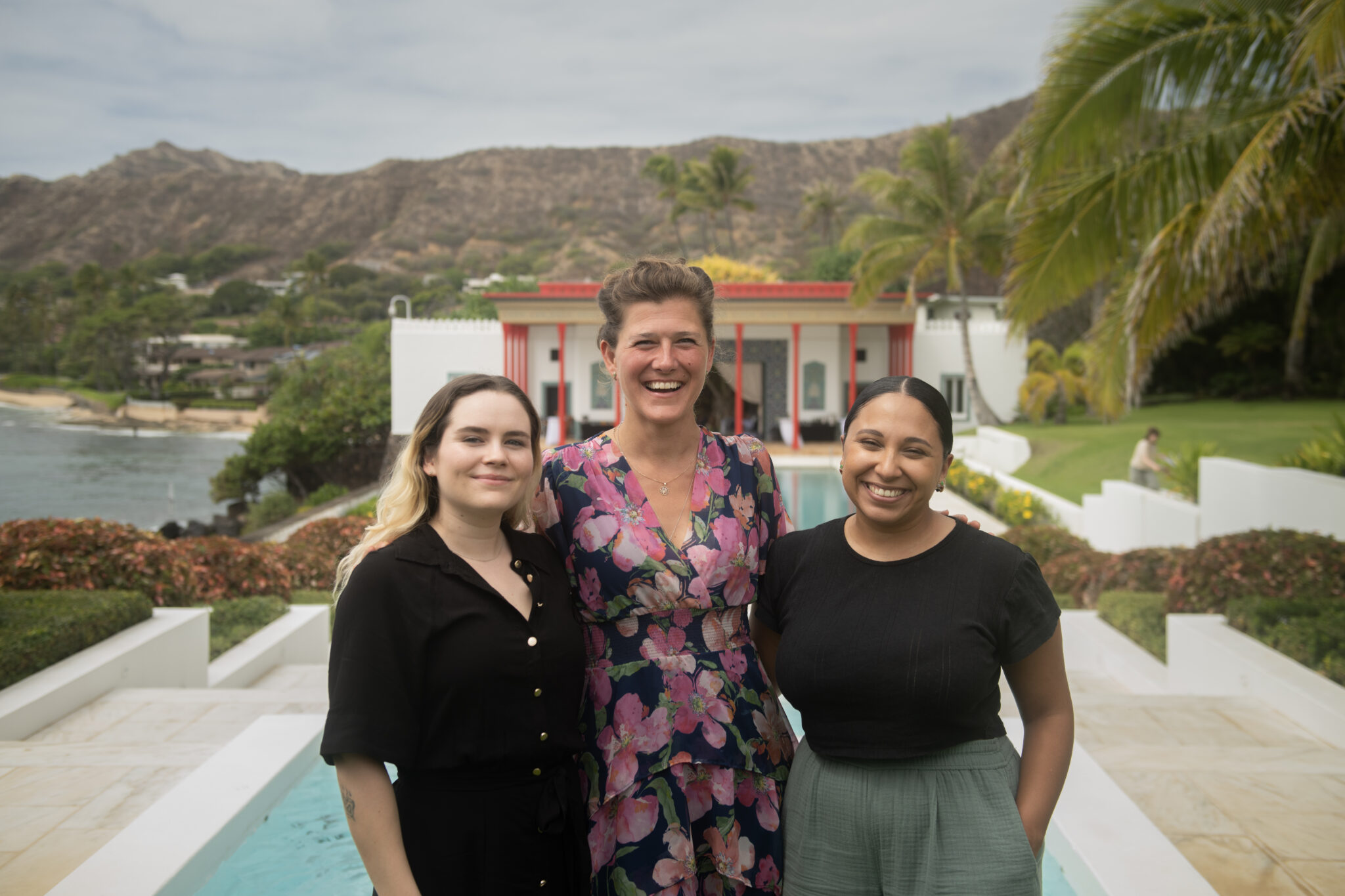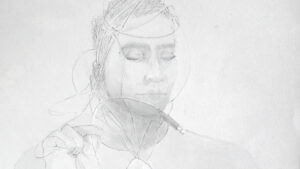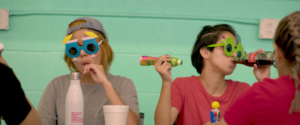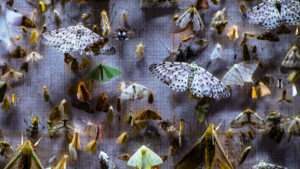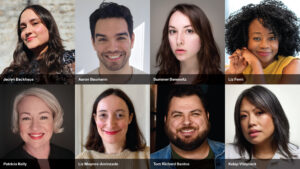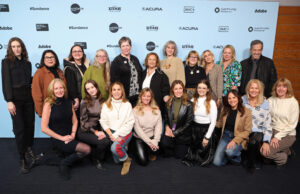The Artist Accelerator team on day 3 of the Shangri La / Sundance / Building Bridges Fellowship. Photo by Elyse Butler.
By Hajnal Molnar-Szakacs, Director of Artist Accelerator and Women at Sundance
In the world of independent documentary filmmaking, where the passion for longform storytelling often collides with the realities of financial precarity, filmmaking can be a lonely path. Robert Redford once called filmmaking an “act of hope.” At the Sundance Artist Accelerator Program we are working hard to instill optimism and work from a place of hope by focusing on artist sustainability, community building, and field advocacy.
In 2021, the Artist Accelerator program was launched with a focus on bringing together underrepresented artists — working across fiction and nonfiction film and television — and creating a space for creative and professional growth. Through sustainability grants, artist development workshops, and bespoke project consultancies,the program aims to support the creation of a more transparent, equitable, and sustainable independent film and television ecosystem.
The first major partnership launched was the Sundance Institute | Humanities Sustainability Fellowship, funded by the National Endowment for the Humanities (NEH) through the American Rescue Plan (ARP), which provided 20 nonfiction artists with crucial sustainability grants and set a standard for future programmatic initiatives. The fellowship was a lifeline for independent documentary artists who frequently face difficult choices between continuing their creative work and taking for-hire projects to meet basic living needs like rent, healthcare, childcare, and groceries. We believe that artists produce their best work when they have the stability to focus entirely on their creative practice.
Three years in, the impact of this support is clear as fellows’ films are now reaching audiences or garnering recognition while still in production. This past year, New Wave, directed by Elizabeth Ai, and Driver, by Nesa Azimi, both premiered at Tribeca Festival. Elizabeth received a Special Jury Mention for New Documentary Director at Tribeca, and recently, Nesa was named to DocNYC’s Class of 2024 “40 Under 40,” recognizing rising talent in the documentary field. Moreover, artists like Marlene McCurtis (Wednesdays in Mississippi) have received national recognition, with her film, still in production, being honored as a nominee for the Ken Burns Prize for Film at the Library of Congress. Documentary filmmaking is a long-term endeavor, and we are thrilled to have played a small role in the success of these exceptional projects. Through sustained support, we are seeing these artists thrive and push the boundaries of nonfiction storytelling.
After our initial NEH partnership, the program has grown to offer a range of artist-focused fellowships and grants in partnership with institutions, corporations, and individuals committed to artist development. These programs are vital, especially in an ecosystem where underrepresented artists often feel isolated or unsupported. Fellowships create a support system for these creatives, a place where they can reimagine the impossible.
To help create conditions for artists to thrive and sustain, another key pillar of our work is field advocacy. The Sundance Institute Documentary Film Program helped launch the Nonfiction Core Application in 2016, which is designed to help filmmakers navigate the often daunting task of submitting grant applications. We are continuing this work with an update of the Nonfiction Core Application, developed in partnership with the International Documentary Association (IDA). The new Core 3.0 was previewed at Camden International Film Festival this past September and will be officially launched in mid-November! With input from across the field, version 3.0 has been redesigned to remove redundancies and to standardize word counts — offering clarity and accessibility to both established and emerging filmmakers. It’s also an educational resource, highlighting the contributions of forward-thinking organizations like FWD-Doc and the Documentary Accountability Working Group (DAWG), making it not only a practical tool but a collaborative one. More importantly, it’s a conversation starter about shared values and best practices in the field.
In addition to the Nonfiction Core, we’re excited to debut the Impact Application Checklist— an initiative developed in partnership with Global Impact Producers Alliance (GIPA) and shaped by feedback from across the documentary impact funding field. This template is designed to standardize application questions for impact funding, and reduce the burden of application writing on filmmakers by offering funders a standardized and structured approach to asking impact-focused questions. Impact storytelling is crucial, not just for awareness but for real-world change, and the Impact Application Checklist ensures that funders and filmmakers have a shared framework to facilitate that work. You can preview the template here.
Through this combination of support, advocacy, and collaboration, we’re forging a path of hope in the independent documentary ecosystem. At Sundance, we see our role as facilitators of new opportunities and as champions for artists whose stories have the power to reshape our world. As we continue to develop artist centered initiatives we are reminded daily of the resilience, creativity, and transformative power these filmmakers hold and that their work brings to the world. Together, we’re building an ecosystem where independent artists — and their stories — can thrive.

